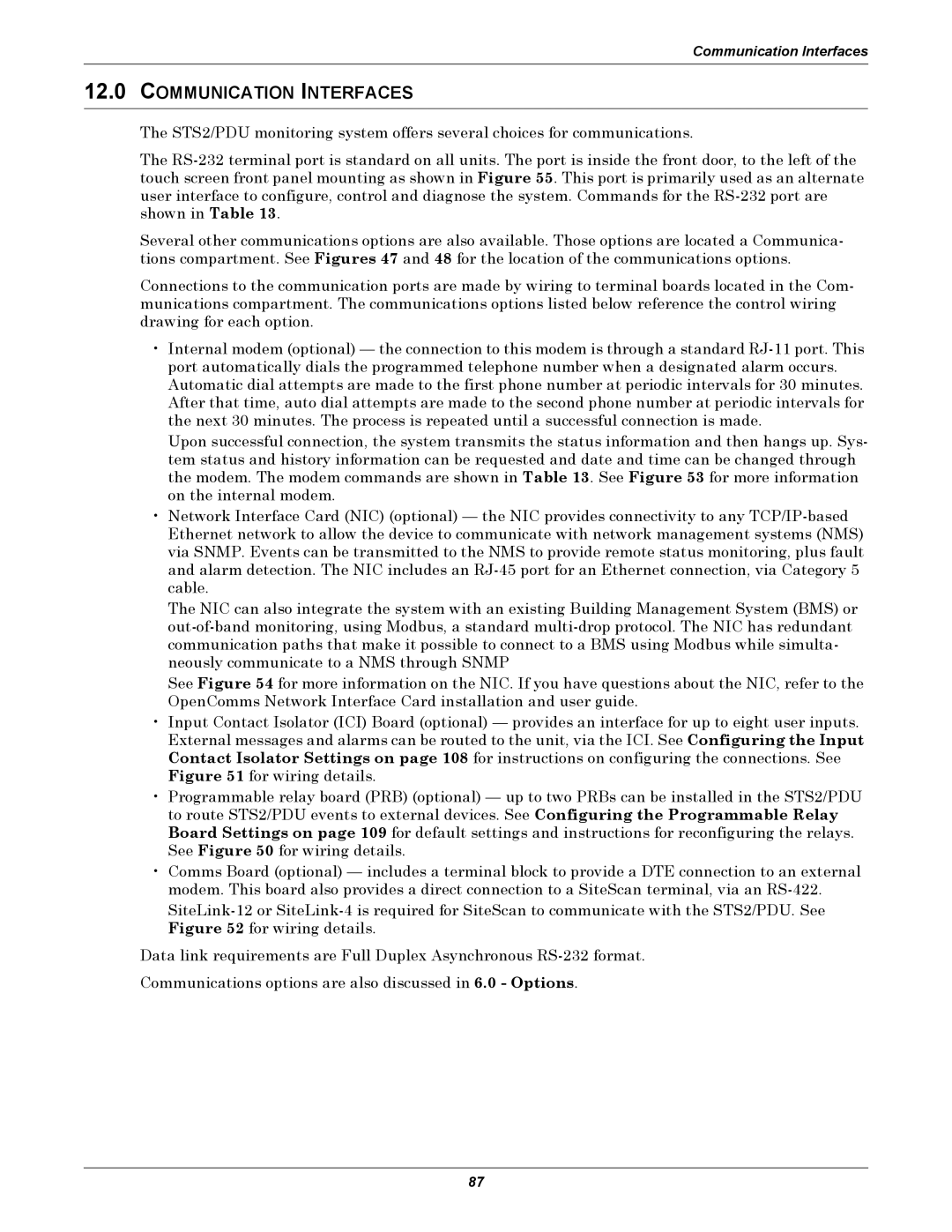
Communication Interfaces
12.0COMMUNICATION INTERFACES
The STS2/PDU monitoring system offers several choices for communications.
The
Several other communications options are also available. Those options are located a Communica- tions compartment. See Figures 47 and 48 for the location of the communications options.
Connections to the communication ports are made by wiring to terminal boards located in the Com- munications compartment. The communications options listed below reference the control wiring drawing for each option.
•Internal modem (optional) — the connection to this modem is through a standard
Upon successful connection, the system transmits the status information and then hangs up. Sys- tem status and history information can be requested and date and time can be changed through the modem. The modem commands are shown in Table 13. See Figure 53 for more information on the internal modem.
•Network Interface Card (NIC) (optional) — the NIC provides connectivity to any
The NIC can also integrate the system with an existing Building Management System (BMS) or
See Figure 54 for more information on the NIC. If you have questions about the NIC, refer to the OpenComms Network Interface Card installation and user guide.
•Input Contact Isolator (ICI) Board (optional) — provides an interface for up to eight user inputs. External messages and alarms can be routed to the unit, via the ICI. See Configuring the Input Contact Isolator Settings on page 108 for instructions on configuring the connections. See Figure 51 for wiring details.
•Programmable relay board (PRB) (optional) — up to two PRBs can be installed in the STS2/PDU to route STS2/PDU events to external devices. See Configuring the Programmable Relay Board Settings on page 109 for default settings and instructions for reconfiguring the relays. See Figure 50 for wiring details.
•Comms Board (optional) — includes a terminal block to provide a DTE connection to an external modem. This board also provides a direct connection to a SiteScan terminal, via an
Data link requirements are Full Duplex Asynchronous
Communications options are also discussed in 6.0 - Options.
87
